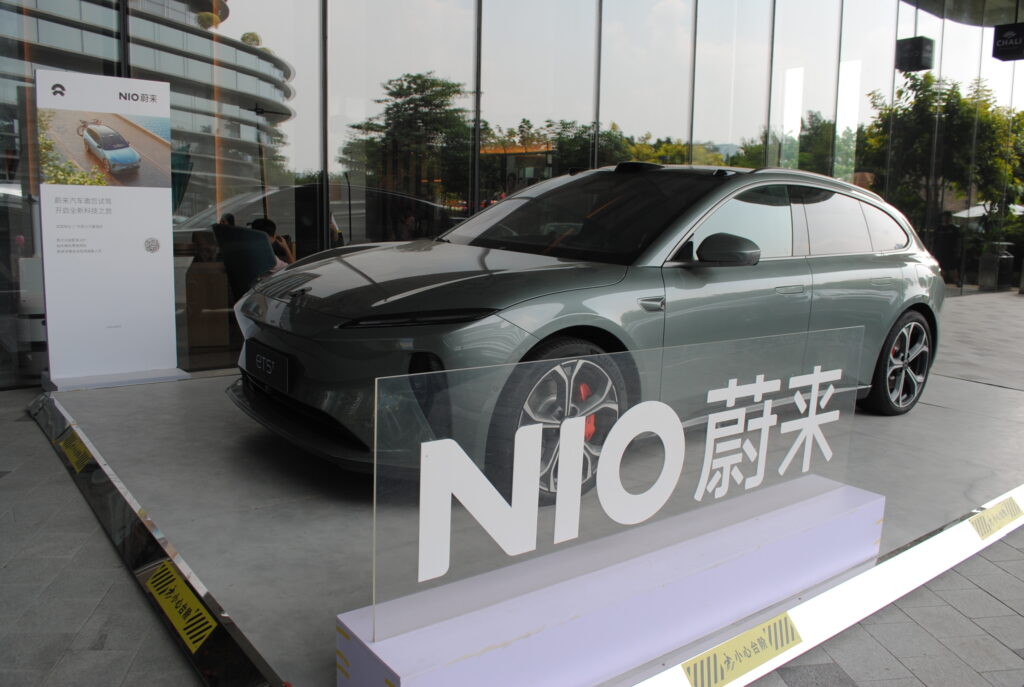
I had the opportunity to visit China this year, my first visit after four years since the Covid pandemic broke out. One of my biggest impressions during my two-week stay in my hometown Guangzhou was the widespread electric vehicles (EV) running in the city. I took more rides in an EV in Guangzhou than in any other city in America. From private sedans to ride-hailing cabs, I saw home-made brands of EV competing speed and battery longevity with one another. Tesla probably is the most well-known foreign EV brand yet in China. But how clean can technology be?
Let us travel to Democratic Republic of the Congo (DRC) in this documentary report, and learn about the making of EVs and the dirty business of advanced technology.
In “The Silicon Valley of Dreams” by scholars Pellow and Park, I learned that the electronics industry is toxic. The authors wrote: “The roots of this industry’s chemical base are in the military, petrochemical, and agricultural sectors—the biggest polluters on earth.” As electric and semi-autonomous cars require increasingly sophisticated chips, the extraction of ores, minerals and non-renewable resources will never end. Not to mention, the US government is determined to bring back chip manufacturing to American soil. I wonder how many innocent, underprivileged lives will lose their life working in the chip industry. How many of them will truly have a wellbeing guarantee in the fanfare that promises new jobs in a “clean industry”?
These are a few questions bothering me:
—Why do governments emphasize on economic growth instead of ecological wealth?
—Why climate mitigation activities, including reducing our wants and demand for excessive materialized needs, are less appealing to individuals?
—Why do we tend to politicize climate action?
These are only starters. I have more questions during my search for mindful living. In Guangzhou, I saw how the Internet of Things (IoT) was integrated in people’s everyday life. Literally, you cannot live well without a smartphone in a Chinese city. Of course, driving an electric vehicle is only an option for middle class Chinese people; the quantity of vehicles on the road is not reduced. On the opposite, the Downs-Thomas Paradox is still at play. That is, improvements in the road network can make congestion worse if improvements make public transport more inconvenient or if it shifts investment.
I told my friends in Guangzhou that American cities have fallen behind in EV market not because the gas at the pump is relatively cheaper than Canada or the UK, but the infrastructure to charge EVs is still in its infancy. Tesla superchargers used to work only for Tesla EVs. That is similar to Apple Inc.’s lightning cable which is only for Apple devices. Until early this year, Tesla opened up more chargers in its nationwide network to non-Tesla vehicles. But without Chinese competitors in the US EV market, American consumers may still have some years to suffer from high prices of electric vehicles and the inconvenience of charging them.
As for the development of the lightning cable, I have to give a shoutout to a European Union law to reduce e-waste. The law requires phone manufacturers to adopt a common charging connection by December 2024. And the 2023 iPhone 15 models feature the universally accepted USB-C connectors instead of lightning cable.
I saw plenty of futuristic looking EVs in Guangzhou. But I don’t quite understand why the EV gets hot inside because of the clear sunroof. This is a common problem for any EV, and not just Tesla alone. In the dog days of summer, if the EV is parked outdoors exposed to the sun, the interior of the car gets hot soon. The car owner usually has to start the cooling system of the car remotely before entering the vehicle. Doesn’t the cooling waste battery energy? This is a big warning to those forgetful parents who might leave babies inside a car. We do not need more tragedies in the clean technology.
As we approach the end of 2023, how far are we to achieve the 17 United Nations Sustainable Development Goals? I am pleased to find this video from our local leader on climate action.
Are you curious about your carbon footprint? The EPA has a website for conscious global citizens like you to find out household carbon footprint. Check it out. Carbon Footprint Calculator
The more we educate ourselves about the lifecycle of our Internet of Things, including EVs and mobile devises, the better we may do more to achieve ecological wealth. Yes, ecological wealth is positive growth for generations to come.
“Many scholars and pundits have proclaimed this era of high technology the ‘Information Age,’ [. . . ] each of these claims conjures up images of high-tech society liberated from the constraints of nature—space, time, gravity—that have defined the boundaries of all previous civilizations. Natural resources—particularly land, minerals, fuels, and water—are necessary factors for our survival and are the root input factors in the global economy. [. . . ] We are as natural resource—dependent as human society has ever been.”
—“The Silicon Valley of Dreams” by David Naguib Pellow and Lisa Sun-Hee Park
